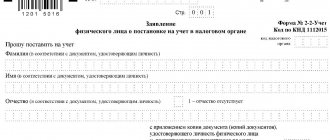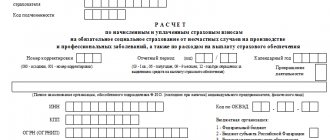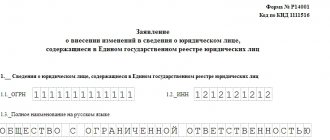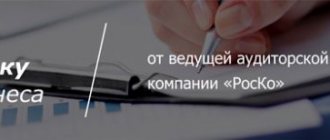The procedure for distributing shares in an LLC
In the LLC law we will find the following possible options for distributing the company's share :
- Free transfer to participants in equal proportions. This means that the share should not be divided equally among everyone, but in accordance with the shares that the participants already have. Thus, the overall ratio of shares in percentage terms will not change. Please note that this method of distribution is only possible when the share has previously been paid. Otherwise, it will not be possible to distribute the share free of charge. It can only be sold.
- Sale to all or some of the LLC members.
- Sales to third parties other than members. This option for distributing the company's share is possible in the absence of a direct prohibition on such a transaction in the charter of the LLC.
The sale of a share (both to some of the participants and to third parties), followed by a change in the ratio of participants’ shares in percentage terms, is possible only if all LLC participants, without exception, vote for such a transaction. Moreover, the share of the society itself is not taken into account when counting votes.
IMPORTANT! The legislation does not require contacting a notary to certify a transaction for the distribution of a company’s share , regardless of whether the share is transferred or sold to participants or third parties. This conclusion is confirmed in the letter of the Federal Tax Service of Russia dated January 11, 2016 No. GD-4-14/52.
How to distribute a share after a participant leaves
According to the new rules for the withdrawal of a participant from an LLC, his share passes to the company after appropriate changes are made to the Unified State Register of Legal Entities. The share owned by the LLC is not taken into account when distributing profits and voting at the general meeting of participants.
Within a year after the transfer of the share, the company must distribute it in one of the ways specified in Article 24 of the Law “On LLC”:
- transfer free of charge to all participants in proportion to their shares in the authorized capital;
- sell a share to all or some participants;
- sell the share to third parties.
✐ Example ▼
Let's look at an example of gratuitous distribution of the share of a withdrawing participant.
Before the withdrawal of the participant, the authorized capital of Parus LLC was 100,000 rubles, which was distributed between the three participants in the following way:
- Petrenko S.V. – share size 45%, nominal value 45,000;
- Sidorchuk G.A. – share size 30%, nominal value 30,000;
- Ivanenko V.I. – share size 25%, nominal value 25,000.
After the release of Ivanenko V.I. his share first passed to the company. That is, now the authorized capital consists of the share of the LLC and the two remaining participants - Petrenko S.V. and Sidorchuk G.A.
At the general meeting, it was decided that the company will not sell its share, but will transfer it to both participants in proportion to their participation in the authorized capital:
- Petrenko S.V. will receive part of the share with a nominal value of 15,000 rubles;
- Sidorchuk G.A. will receive part of the share with a nominal value of 10,000 rubles.
The final shares of the participants after the gratuitous transfer of its shares by the company are:
- Petrenko S.V. – share size 60%, nominal value 60,000 rubles;
- Sidorchuk G.A. – share size 40%, nominal value 40,000 rubles.
Please note an important nuance: if the share transferred to the LLC was paid for by a former participant, then it can be distributed in any of three ways. But if not, then only the sale of this share to third parties is permitted (Article 24 of the LLC Law).
As for the price when selling a share, the following conditions must be met:
- unpaid share – not less than the nominal value;
- the paid share for which the LLC paid compensation to the former participant - no less than the actual value or at the price set by the participants.
When deciding to sell a share of the company to third parties, you need to make sure that the charter does not contain a prohibition on this. If there is a ban, you must first make changes to the charter in form P13001. If, during the year, the distribution of the share of the withdrawing participant does not occur, the company is obliged to declare a reduction in the authorized capital.
Distribution of shares owned by the company: registration procedure and accounting entries
Let's consider what documents will need to be completed to complete the procedure for distributing shares owned by the company .
If the share is distributed among the participants, the set of documents, in addition to the decision (protocol) of the participants, will include:
- form p14001, the signature on which must be certified by a notary;
- documents justifying the transfer of the share to the company (for example, a letter of resignation from an LLC participant).
If the share is sold (to a participant or a third party), then in addition to the documents listed above, you must draw up a share sale agreement.
IMPORTANT! The charter of an LLC should not reflect information about the participants of the LLC and the size of their shares. Therefore, changes will only need to be made to the Unified State Register of Legal Entities.
The share transferred to the company is accounted for in account 81 (own shares) at the price at which the share went to the company (for example, in the amount of payments to the withdrawing participant). If the share is distributed among the participants, this operation is reflected in account 75, and then the value of the share is written off from the LLC’s own capital (accounts 82, 83, 84).
If the share is redeemed by a participant or a third party, the write-off will occur to subaccount 75-1.
Is the distribution of the share of a retired LLC participant subject to personal income tax, ConsultantPlus explains in its ready-made solution. If you do not yet have access to the ConsultantPlus system, you can obtain it free of charge for 2 days.
What to do with the contribution if a participant leaves the organization?
Any co-owner of a business company (LLC), who is not its sole founder, has the right to voluntarily leave its members.
How can the sole founder leave an LLC?
He can independently initiate his exit. This possibility is clearly provided for by the law on LLC (14-FZ), namely, the eighth article of this legal act, which formulates the right to withdraw a participant from the LLC by alienating its own share in the management company to this company, if such an option is regulated by the charter of the LLC.
Alternatively, the retiring participant has the right to demand that the company buy out its share in situations provided for by 14-FZ.
Sometimes the withdrawal of a participant from an LLC occurs forcibly - through a judicial procedure, at the request of other co-founders.
One way or another, if the exit of the founder from the LLC through the alienation of a share of participation to a business company is provided for by the charter of this legal entity, such disposal is carried out in compliance with the following rules:
- To leave the LLC, the permission of the other co-founders is not required - leaving the LLC at your own request.
- The retiring participant transfers his own share to the business company.
- The withdrawn co-owner is reimbursed the cost of his contribution to the legal entity’s management company. In this case, it is necessary to follow the established procedure for making such a payment.
Thus, the legal entity (LLC) compensates the retired co-founder for the actual value of his contribution, which is determined by the product of the amount of the net assets of the business company and the percentage share of this co-founder in the management company.
General rules provide for such compensation regardless of the actual reasons for the disposal. However, the retiring participant is not immediately paid his contribution to the authorized capital.
Reimbursement of the cost of the contribution is the final stage of the procedure for the withdrawal of a participant from the LLC.
Accordingly, payment to the retiring co-founder of his share in the authorized capital of the business company is considered as one of the stages of the standard disposal procedure:
- A participant intending to leave the LLC draws up a corresponding application and sends it to the head of the legal entity or other authorized entity. It is drawn up in free form and certified by a notary.
- The share of the retiring co-founder is transferred to a business company (LLC). This occurs immediately after the above statement is accepted. As a result, the applicant loses his valid status as a member of the company.
- Changes in the composition of LLC participants are officially registered by the tax service. To do this, the head of the legal entity sends the tax department a set of necessary documents (application of the retired founder, completed application P14001). Updated data is reflected in the Unified State Register of Legal Entities within five days (from the date of application to the Federal Tax Service), which is confirmed by providing the legal entity with the relevant documents. The fact of withdrawal of the applicant participant becomes official.
- The final stage is compensation of the deposit to the withdrawing participant of the legal entity. The cost can be compensated either by cash or non-monetary assets (some property). The decision on the form of such compensation (monetary/non-monetary) is made by the withdrawing co-founder and is confirmed by his written permission. The share is paid in money or returned in property to the retired founder within three months, counted from the day of its transfer to the business company (another period may be provided for by the charter of the legal entity).
Compensation of a share to a withdrawing participant with money or other property must be recorded by drawing up the relevant documents.
These may be official papers certifying the fact of non-cash transfer of funds to the withdrawing founder, as well as a receipt, by the execution of which the withdrawing participant confirms the receipt of any non-monetary assets, valued, however, in monetary terms.
If the share is not paid to the retired co-founder within the established time frame, the provisions of Article 395 of the Civil Code of the Russian Federation are applied, providing for the accrual of appropriate interest on its actual value.
How to pay with property?
It is noteworthy that the contribution of participation in an LLC can be compensated to the retired co-founder not only in cash, but also in non-monetary assets, that is, some property in kind.
The valuation of non-monetary assets transferred to a retired participant in a business company as compensation for his share must fully correspond to the actual value of the reimbursed contribution.
Payment of a share in property is permitted only if the withdrawing participant himself has agreed in writing to this form of compensation. The Law on LLC (14-FZ) clearly stipulates this requirement - in Article 23, paragraph 6.1.
Compensation of a share with non-monetary assets is considered convenient and acceptable if a business company that has obligations to the retired founder does not have sufficient free money.
In terms of taxation and accounting, this practice does not seem to be profitable, since the return of a participation share with property causes the legal entity to have additional obligations related to the need to pay income tax and VAT.
Thus, the transfer of non-monetary assets to a retired participant is always accompanied by a natural transfer of ownership of them from the legal entity to the former founder.
This results in the company having corresponding VAT obligations. However, VAT is calculated only on the amount by which the value of the transferred property exceeds the amount of the original contribution.
In addition, the legal entity will have to pay the appropriate amount of income tax to the budget, since a business company generates non-operating income if non-monetary assets are transferred to the retired founder to compensate for the participation interest.
The basis for calculating income tax - non-operating income - will be determined in this case as the actual value of the refundable share, reduced by the residual value of the transferred property.
Taxation of payments, personal income tax
The actual value of the contribution to the authorized capital, reimbursed to the retired participant of the business company (LLC), can be considered as income that is subject to income tax (NDFL).
If a share in an LLC was acquired by an individual after 01/01/2011, and the period of its ownership by the time the citizen left the business company exceeded five years, then the compensation received will not be considered taxable income.
If a share in an LLC was acquired by an individual before 01/01/2011, then the actual price of the refunded share is subject to personal income tax, regardless of the period of its ownership.
Obligations to pay personal income tax on the funds received arise from the withdrawing participant of the business company even if the compensated contribution was acquired by the citizen after 01/01/2011, and the period of actual possession did not exceed five years.
The business company (LLC), which reimburses the withdrawing participant for the contribution to the management company, is at the same time a tax agent. It is obliged to withhold the corresponding personal income tax from the payment made and timely transfer it to the budget.
An individual is obliged to do this independently only if his share in the LLC is alienated through a purchase and sale transaction. However, the procedure for the withdrawal of a participant from the LLC does not imply the sale of his contribution under the purchase and sale agreement.
This means that the exit of the founder from the business company is not considered a transaction of purchase and sale of property rights.
Accordingly, the retiring participant, who is an individual, in this case does not have to independently determine and remit the appropriate income tax.
Is it possible to withdraw from the composition without issuing a deposit?
It also happens that the founder leaves the LLC without compensation for his share of participation in cash or non-monetary assets.
Retirement of a co-owner without payment of a share is permitted in the following typical situations:
- The retiring participant himself refused the contribution compensation due to him. This practice is provided for by current legislation and is called debt forgiveness. Refusal to receive the contribution is reflected in the application for retirement from the LLC.
- The company refuses to pay the share because the retiring participant has not paid his own contribution to the LLC. However, a participant who intends to leave the LLC and wants to receive his contribution can challenge this basis in court.
- A business company (LLC) shows clear signs of financial insolvency, which can lead to bankruptcy. Alternatively, a share payment conditional on the withdrawal of the applicant member could bankrupt the LLC. In such circumstances, a participant who has already withdrawn has the right to restore his membership in the business company.
Distribution between co-owners of the company
If one of the participants leaves the LLC, his contribution is transferred to this business company on the basis of a corresponding application.
The distribution of shares in an LLC between its co-owners is regulated by the second paragraph of Article 24 of the LLC Law (14-FZ).
The distribution of the share of the retired founder among the remaining co-founders of the legal entity is carried out within one year, counted from the moment of transfer of this share to the business company.
In order to dispose of the contribution of a retired participant transferred to the company, the remaining co-owners of the legal entity hold a general meeting, during which one of the following possible decisions can be made:
- sell to third parties not related to the LLC;
- sell to any of the existing co-founders;
- distribute among existing founders.
The share of the retired participant is distributed among all existing founders in proportion to their contributions. This distribution is done free of charge.
An important nuance - the co-founders have the right to distribute the share of the retired participant among themselves only if this share was paid before its transfer to the business company.
If the share is not fully paid, it can only be realized (sold).
Distribution of the company's share between participants: minutes of the general meeting
Distribution of the company's share is possible only on the basis of the decision of the participants. The meeting of participants is convened and held according to the general rules established by the law on LLCs (Articles 36, 37). In addition, it is necessary to take into account the provisions of Chapter. 9.1 of the Civil Code of the Russian Federation, especially since they are a novelty in civil legislation.
The protocol must include the following information:
- about the day, time and place of the meeting;
- participants who took part in the meeting;
- voting results for each issue;
- the person doing the counting.
Let us remind you that shares owned by the company do not vote.
Art. 67.1 of the Civil Code of the Russian Federation requires confirmation of the presence of participants and their voting. This is done:
- Through certification of the fact by a notary, who must be present at the meeting (FNP letter dated 09/01/2014 No. 2405/03-16-3).
- In another way, fixed in the charter or by unanimous decision of the participants. These methods include:
- affixing the signatures of all participants on the protocol;
- use of special means (audio recording or video recording of the meeting);
- other ways to confirm that a decision has been made.
IMPORTANT! If the protocol is not confirmed, this entails its nullity (resolution of the plenum of the RF Armed Forces dated June 23, 2015 No. 25).










